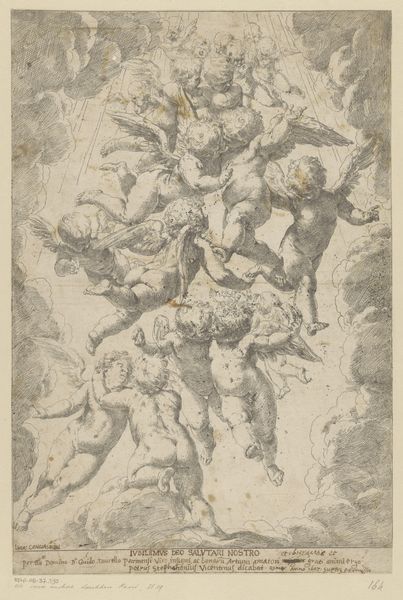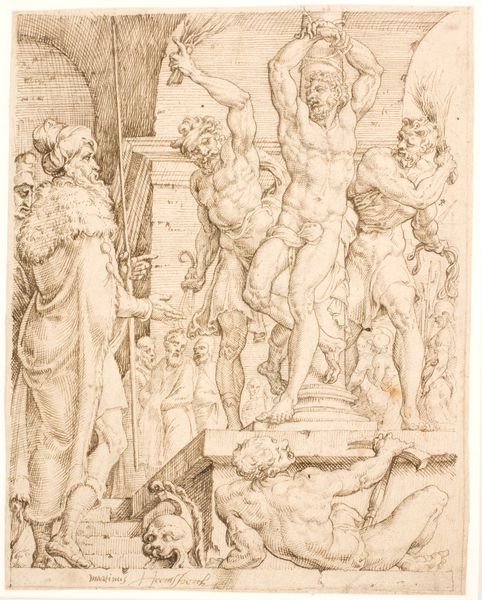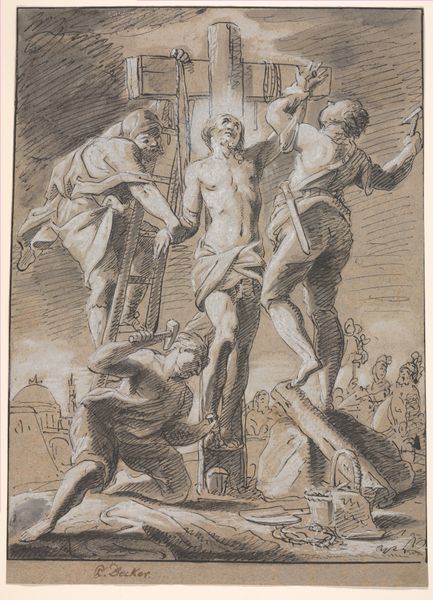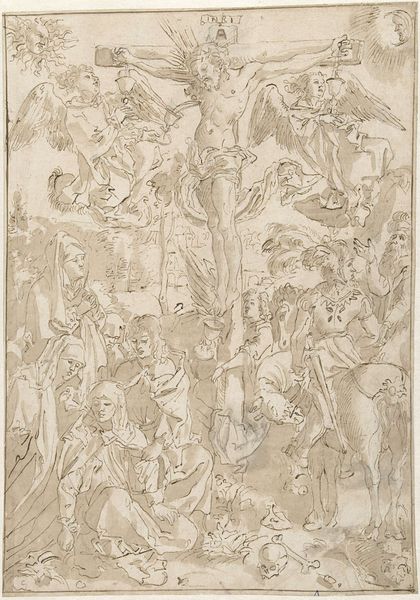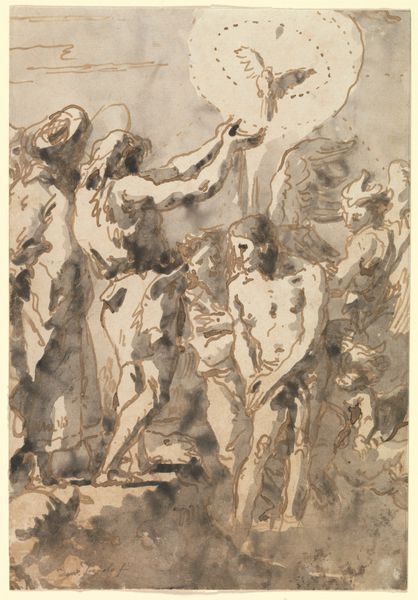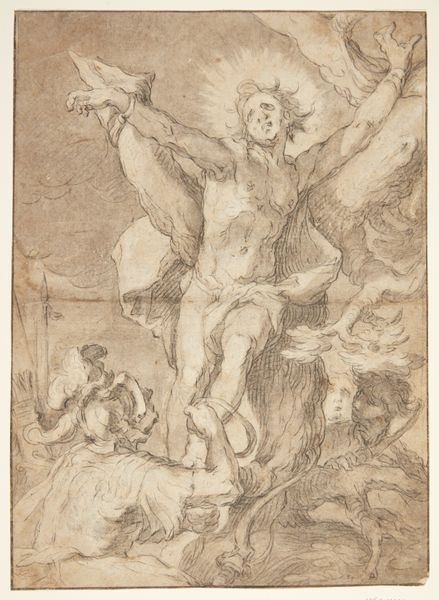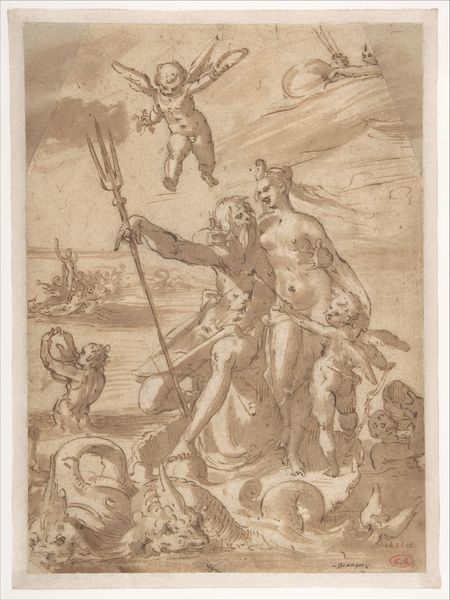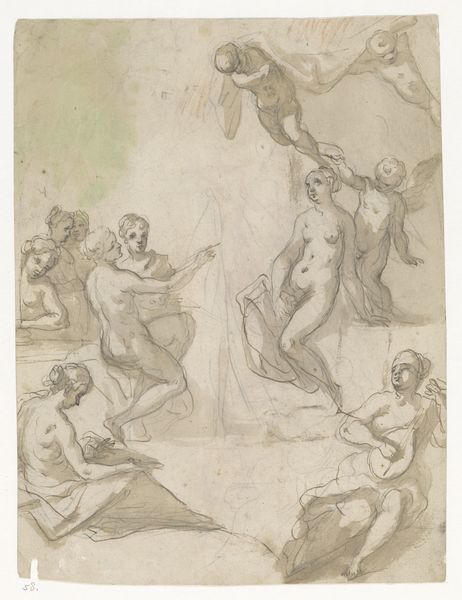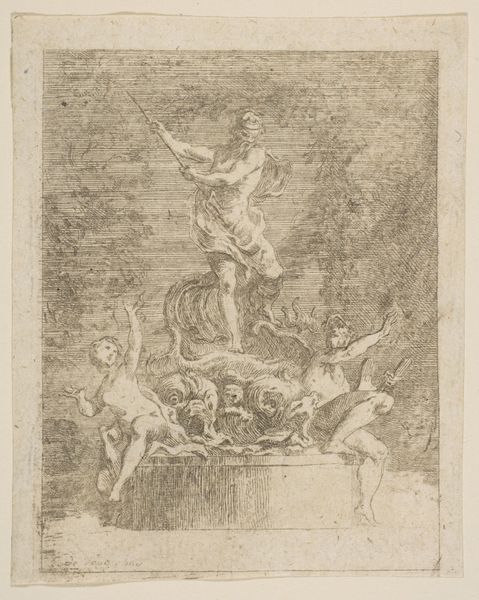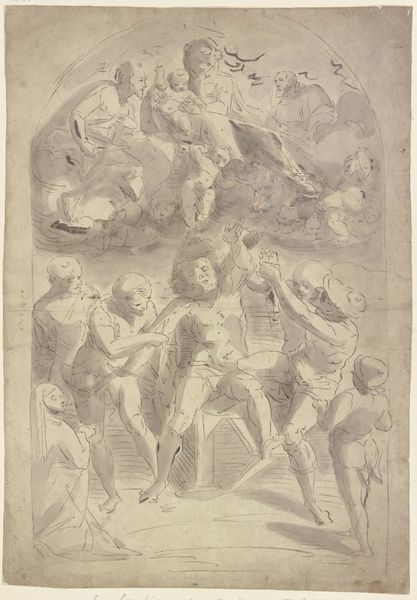
drawing, ink
#
drawing
#
mannerism
#
figuration
#
ink
#
history-painting
#
academic-art
Dimensions: 356 mm (height) x 266 mm (width) (bladmaal)
Curator: Here we have Jacopo Palma il Giovane’s drawing, "The Crucifixion," created sometime between 1548 and 1628. It’s an ink drawing held here at the SMK. Editor: Immediately striking is the composition. The use of multiple crucifixions, almost stacked, lends a brutal, chaotic feel. It amplifies the suffering. Curator: It reflects a shift toward Mannerism, deviating from the High Renaissance ideals of balance and harmony. The crowded scene and elongated figures certainly point that way. What's compelling here is Palma’s use of historical and academic art traditions to deliver a particularly fraught image. Editor: Indeed. Notice the symbols associated with Christ’s Passion – the ladders used to raise the condemned, the garments being divided, the soldiers with their spears. Even the placement of figures, clustered and interlocked, it reads as an amplification of emotional intensity. But it feels intentional; Palma’s work here, with the drawing's lines and shades, captures agony and fervor together. Curator: Absolutely. It mirrors the political and religious turmoil of the era, especially in Venice. Artists like Palma had to navigate Counter-Reformation pressures, which called for clear religious messaging and a condemnation of extravagance. And the public display of it meant something in the scope of society, for sure. Editor: And what's intriguing, of course, is the question about these historical representations being displayed. As objects of veneration and devotion or vehicles for reinforcing social values and moral principles? Or is the goal simply the sublime experience? Curator: It’s all interwoven, isn't it? The power of art lies in its ability to perform so many of these cultural functions at once. Thanks for lending your perspective on the imagery within. Editor: My pleasure. I appreciate thinking about the symbolism in dialogue with these political factors that help us truly understand its place within history.
Comments
No comments
Be the first to comment and join the conversation on the ultimate creative platform.

